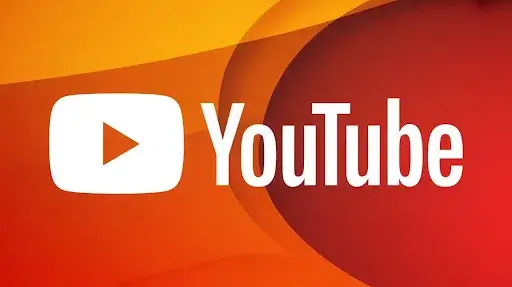Infographic videos transform complex data into simple, engaging visuals through the power of animation. They make information easier to understand, remember, and share—perfect for boosting both clarity and audience engagement.
In this guide, you’ll learn exactly how to create animated infographic videos from start to finish. We’ll walk you through every stage—planning, scripting, selecting the right tools, and following proven best practices—so you can produce content that truly connects with your viewers.
Before we dive into the step-by-step process, let’s spark some creativity. Check out our handpicked collection of the Best Animated B2B Infographic Video examples. These showcase how powerful visuals can turn even the most technical ideas into captivating stories.
Here’s a fascinating fact: according to research from MIT, the human brain can process an image in just 13 milliseconds. That means your audience will absorb visuals far faster than text—making them a powerful tool for leaving a lasting impression.
Of course, knowing that visuals work is one thing—making them work is another. Many people get stuck on the technical side, wondering how to keep things both clear and engaging. That’s where this guide comes in.
By the end, you’ll have a clear blueprint for turning your ideas into infographic videos that simplify complex concepts and make your message resonate effortlessly. Let’s get started.
What Are Infographic Videos?
Infographic videos are short, animated visuals designed to make complex information easy to understand and remember. They combine motion graphics, infographic design, and clear narration to turn data or ideas into engaging visual stories.
Unlike static infographics, these videos use movement, pacing, and sound to make content more dynamic and persuasive. They’re perfect for presenting reports, simplifying analytics, educating audiences, or increasing engagement on websites and social media.
Whether you’re a business aiming to break down industry data or a nonprofit sharing research findings, infographic videos allow you to communicate your message clearly, professionally, and with lasting impact.
Why Infographic Videos Are a Smart Choice
Infographic videos bring advantages that traditional content simply can’t match. Here’s why they stand out:
- Stronger Engagement – The combination of moving visuals, narration, and sound keeps viewers interested from start to finish.
- Clarity for Complex Topics – They transform complicated data, statistics, or processes into simple, digestible visuals that anyone can follow.
- Higher Shareability – People are more likely to share compelling visual content, helping you expand your reach and strengthen your brand visibility.
- Better SEO Performance – Engaging videos increase time spent on your page, which can boost your search engine rankings.
- Versatility Across Platforms – Use them on social media, websites, presentations, or email campaigns—one video can serve multiple purposes.
In short, infographic videos take the power of visual communication and elevate it, making them one of the most effective tools for storytelling, education, and marketing today.
How to Create an Infographic Video: Step-by-Step Guide
If you’re ready to create your own infographic video, here’s a straightforward process to take you from idea to final product.
Step 1: Plan Your Infographic Video
Before you start designing, define exactly what you want the video to accomplish. Are you aiming to:
- Explain a complex concept?
- Share important data and insights?
- Tell a story?
- Showcase your brand?
Also decide on your main objective. Do you want to:
- Build brand awareness?
- Train employees?
- Demonstrate a product?
- Generate leads and increase conversions?
The clearer your goals, the easier it will be to make strong creative and design decisions.
Next, consider the structure. Will the video follow a timeline? Show a cause-and-effect sequence? Compare options? Map out the flow so your audience can follow along without confusion.
Finally, write down every possible version of your core message. Review them and choose the one that best matches your vision and end goal.
Pro Tip: If you’re stuck, do a quick “brain dump.” Write down every idea—good or bad—without filtering. Then refine until you find the clearest direction.
Step 2: Write a Compelling Script for Your Infographic Video
Your script is the backbone of your infographic video—it guides the story, sets the pace, and connects the visuals to your message. Aim for a clear and engaging flow with three key parts:
- Introduction: Briefly introduce your topic and spark interest.
- Middle: Present your key data points and insights in a logical order.
- Conclusion: Summarize the main takeaways and end with a strong closing message.
Once you’ve written your script, read it aloud. This helps you catch awkward phrasing, pacing issues, or sentences that sound too formal. Make adjustments until it feels natural and conversational. Then, share it with a colleague or friend for feedback. A second opinion can highlight areas you may have overlooked, ensuring your script is ready before moving on to the next stage.
Step 3: Design and Plan Your Infographic Video
Before diving into production, create a storyboard. This is a simple visual plan that maps out each scene in your video. You can draw it on paper or use digital tools—either works fine. The goal is to see how your script and visuals will work together, making sure the timing is smooth and your narration matches the animation.
Start with rough sketches—stick figures, arrows, and shapes are enough at this stage. Focus on layout, flow, and scene transitions rather than artistic detail. Once the structure is clear, decide on a distinctive visual style that aligns with your brand’s personality and message.
For inspiration, research top explainer video production companies that specialize in infographic videos. Review their portfolios to see different animation approaches, color schemes, and storytelling techniques. Observing what works well in professional examples can help you refine your own creative direction.
Step 4: Bring Your Infographic to Life with Animation
An infographic is essentially data turned into visuals—and while static graphics can make information easier to understand, they can only take engagement so far. To truly capture attention and make your message memorable, add motion. Animation transforms a static infographic into a dynamic story that keeps viewers hooked.
Start by mastering the basics—simple fades, smooth cuts, and subtle transitions between data points. These techniques create a clean, professional flow without overwhelming your audience. Once you’re comfortable, you can layer in more advanced animation styles, such as keyframe movements, motion effects, and creative transitions that highlight important details. The goal is to guide viewers through the information in a way that feels natural, fluid, and visually appealing.
Step 5: Export Your Infographic Video the Right Way
When your animated infographic is complete, it’s time to share it with the world. Exporting it correctly is crucial for maintaining both quality and compatibility. Consider where your video will be displayed before choosing export settings—different platforms have different requirements.
For online use, MP4 is often the best choice, as it delivers excellent visual quality with efficient compression, ensuring faster loading without sacrificing clarity. Before finalizing your export, give your video a careful review. Check timing, animation smoothness, and audio sync to make sure everything is polished. Once you’re confident it’s flawless, export it in the optimal resolution and format for your intended platform.
Step #6: Distributing Your Infographic Video
Your video is ready—now it’s time to share it with the world. To maximize its reach, publish it across multiple channels. Post it on social media, embed it on your website’s landing page, include it in email marketing campaigns, and even use it in presentations. The more places your video appears, the more people you’ll reach.
Before you hit publish, take a few minutes to optimize it for search engines. Add relevant keywords to your title, description, and tags. Create a compelling thumbnail that encourages clicks, and write a description that clearly tells viewers what they’ll get from watching.
Review your video carefully before releasing it. Check the timing, transitions, and pacing, and make sure the graphics, audio, and animations feel polished. Ask for feedback from others and implement the most useful suggestions.
When exporting, aim for the highest quality possible—1080p (Full HD) at a minimum. Test it on different devices to confirm it looks sharp and sounds clear everywhere. Don’t forget about mobile viewers: consider creating a vertical or square version for better viewing on smartphones.
To get even more mileage from your work, repurpose it. Clip short sections and use them as bite-sized infographic videos for Instagram Reels, YouTube Shorts, or TikTok. These quick, engaging snippets can attract viewers who may then seek out your full video.
Finally, remember that creating infographic videos is part art, part experimentation. There’s no universal template for success, so test different formats, lengths, and styles until you find what resonates most with your audience.
5 Best Tools for Creating Animated Infographic Videos
Animated infographics are one of the most engaging ways to present data, tell a story, or explain complex concepts. You don’t need to be a professional animator to make them—there are plenty of tools that make the process simple and fun. Here are five of the best options you can try:
1. Adobe Express
Adobe Express is a beginner-friendly infographic video maker packed with free, customizable templates. You can easily add your own text, images, and videos, as well as captions, voiceovers, and background music. It’s designed for anyone, even if you’ve never edited a video before, making it a perfect choice for quick and polished results.
2. Animaker
Animaker makes creating animated infographics fast and straightforward. It offers an impressive library of over 1,000 charts, 1,000+ icons, and 300+ maps that you can integrate into your videos. The best part? You can use it for free and still access a wide range of design elements to bring your visuals to life.
3. Powtoon
Powtoon is an AI-powered video creation platform that makes professional-quality infographic videos possible for everyone. It comes with hundreds of ready-to-use templates, so you can start building right away. While it offers a free plan with basic features, upgrading unlocks premium templates, AI tools, and branding options for a more tailored finish.
4. Biteable
If speed is your priority, Biteable is worth checking out. You can create animated infographics in minutes by choosing from pre-made templates or starting from scratch. The platform offers over 24 million stock clips, animations, and live-action scenes to choose from. Its free plan covers the essentials, while the paid version gives you access to advanced features and higher customization.
5. Canva
Known for its ease of use, Canva offers a simple drag-and-drop editor, a massive collection of over a million professionally designed templates, and a built-in Charts tool for data visualization. You can also use its AI features to generate text and media instantly. Canva provides millions of free photos, illustrations, and icons, with premium assets available at affordable prices.
With these tools, creating eye-catching animated infographics is easier than ever. Whether you need them for a business presentation, social media content, or educational purposes, you can find a platform here that fits your style, budget, and skill level.
Choosing Between 2D and 3D Infographic Animation for Your Video
When planning an infographic video, one of the first decisions you’ll face is whether to use 2D or 3D animation. The right choice depends on your message, audience, and budget.
2D infographic animation is all about clarity and simplicity. Using flat graphics, clean lines, and smooth transitions, it makes data easy to understand and visually appealing. It’s a great choice for educational content, product explainers, and business reports—especially when speed and cost-efficiency matter.
3D infographic animation adds depth, realism, and an extra layer of visual impact. With lifelike perspectives and dynamic movements, it’s perfect for showcasing products, illustrating complex processes, or creating simulations that need a more immersive feel.
Both styles can be highly effective. The key is to match your choice with your storytelling goals, brand style, and the level of visual impact you want to deliver.
If you understand your objectives, know your audience, and choose the right animation style, your infographic video will communicate your message clearly and keep viewers engaged from start to finish.
Pro Tips for Creating Infographic Videos That Truly Engage
Creating an effective infographic video requires more than just presenting data—it’s about capturing attention and telling a story visually. Follow these tips to make your videos both engaging and impactful:
1. Keep It Short and Focused
Attention spans are short, so aim for a concise video of 60 to 90 seconds. Focus on the key points to make your message clear and memorable.
2. Guide the Viewer with Visual Cues
Use motion graphics, arrows, and smooth transitions to highlight important information. These visual cues help viewers follow your data and stay engaged throughout the video.
3. Tell a Story with Your Data
Instead of just presenting facts, craft a narrative around your information. A well-structured story gives context and purpose, making your data more relatable and easier to understand.
4. Make It Mobile-Friendly
Most viewers watch videos on their phones, so ensure your infographic is optimized for small screens. Keep text readable and visuals clear, even on mobile devices.
5. Include Captions for Accessibility
Adding captions makes your video accessible to a wider audience and allows viewers to understand the content without sound, which is especially important on social media platforms.
Frequently Asked Questions
How Long Should a Video Infographic Be?
For maximum engagement, aim for a video infographic that runs between 60 and 90 seconds. This length is ideal for delivering concise, impactful information without losing your audience’s attention. While it can be tempting to include every detail, remember the storytelling principle: less is more.
That said, if your content genuinely demands it, your video can exceed 5 minutes—just ensure every segment adds value and nothing feels unnecessary.
Can I Create an Infographic Video Without Design Experience?
Absolutely! Platforms like Animaker, Powtoon, and Canva offer pre-built templates and intuitive drag-and-drop tools, making it simple for beginners to create professional-looking infographic videos. No design background required.
What Type of Content Works Best for Video Infographics?
Infographic videos shine when explaining data-heavy topics, complex processes, or statistics. They simplify information into an easy-to-follow, visually engaging format, making even complicated concepts easy to understand.
Conclusion
A successful video infographic is more than just visuals paired with a script—it’s a complete storytelling experience. When animation, voiceover, and narrative work together, the result is a message that resonates, educates, and captivates.
Creating infographic videos isn’t just about sharing information—it’s about telling a story that educates, engages, and entertains your audience. These videos help viewers grasp concepts quickly and remember them longer, making your content both effective and memorable.
When done right, infographic video production is a powerful tool that enhances learning, drives clarity, and leaves a lasting impact.









